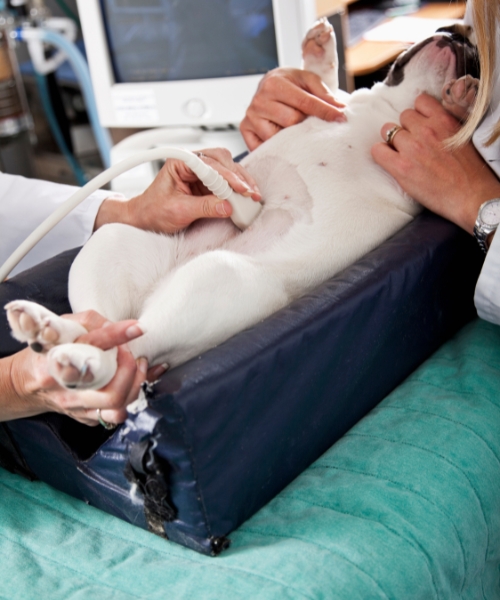Pet Ultrasound
At Happy Tails Veterinary Clinic in Wellington, FL, we prioritize providing advanced diagnostic tools to ensure your pet’s health and well-being.

Benefits of Pet Ultrasound
Ultrasound imaging provides many benefits, both for pets experiencing symptoms and for routine health evaluations. Some of these advantages include:
- Accurate Diagnosis: Ultrasounds can detect masses, fluid buildup, and other abnormalities that may not be visible through physical exams or X-rays.
- Minimally Invasive: The procedure is gentle, requiring no incisions, and most pets experience little to no stress during the process.
- Guidance for Procedures: Ultrasound can assist with performing biopsies or draining fluid, ensuring precision and safety.
- Quick Results: The images produced are immediate, allowing for faster diagnosis and treatment recommendations.
When Should Your Pet Have an Ultrasound?
Your pet may benefit from an ultrasound if they display signs of illness or discomfort. Common reasons for performing an ultrasound include:
Persistent Vomiting
When a pet experiences frequent vomiting or diarrhea, it may indicate underlying gastrointestinal issues, such as blockages, infections, or inflammation.
Difficulty Urinating
Difficulty urinating, increased frequency, or noticeable discomfort during urination can signal urinary tract infections, bladder stones, or kidney issues.
Unexplained Weight Loss
Weight loss or a sudden decrease in energy levels might be linked to chronic conditions such as liver disease, kidney dysfunction, or cancer.
Monitoring Pregnancies in Pets
Weight loss or a sudden decrease in energy levels might be linked to chronic conditions such as liver disease, kidney dysfunction, or cancer.
Evaluating Growths
What to Expect During a Pet Ultrasound
The process is designed to be as stress-free as possible. Your pet will lie comfortably on a padded surface while a trained veterinarian or technician performs the procedure. A small area of fur is shaved to ensure proper contact with the ultrasound probe, and a gel is applied to enhance image quality. In most cases, sedation is not necessary, though it may be used for particularly anxious pets.
The procedure typically takes 20 to 40 minutes, depending on the area being examined. Once the images are reviewed, our team will discuss the findings and next steps with you in detail.

